Here's a song by LinkedIn Park
Personal Branding on LinkedIn is considered of paramount importance, today we will see how to leverage this platform to grow as a student in Tech.
First of all, apologies to all the Chester fans out there, but a LinkedIn pun was in order for the special edition of MichiSpotlight!
In the last one, we looked at the most important things to focus on while building a stellar profile for yourself.
The fact of the matter is that people do judge a book by its cover, especially today when there are way too many “books” available. We need to stand out and I’m gonna tell you a few ways to do the same. They have worked for me so far as I’m able to differentiate myself from my peers.
Also as a side note, this edition of the newsletter wouldn’t contain opportunities like the others since it is a comprehensive guide to Profile Optimization on LinkedIn.
But obviously, don’t worry, I’ll be sending out a separate newsletter tomorrow which would include only opportunities. I’ve got too many to share so stay tuned ;)
So, let’s dive in!
If you have read the previous editions of MichiSpotlight, you’d know that I don’t start my explanation without some solid data. Here’s the LinkedIn poll I conducted this week:
Truth be told, this poll isn’t surprising. When applying for a job or internship, the one thing that all recruiters look for is a concise resume. We talked a little bit about how we can build one in the first edition of this newsletter.
The 18% who think that GitHub or Kaggle is important are right as well.
As a matter of fact, the answer to this question is subject to what kind of job a person is applying to. For example, If you’re a graphic designer, you’ll need to focus more on your Behance portfolio. In the same way, if you’re applying for an internship as a web developer, you’ll need to have great projects on your GitHub.
But one thing that is common in all job types is LinkedIn. From searching for opportunities to showcasing that you’re a good fit for a job, it is a whole package that you need to start caring about more if you aren’t already.
LinkedIn provides you a platform to connect with like-minded professionals, build your personal brand, share your intellect with your network, and provide greater detail about yourself and your experiences.
So, where to begin? The first step: Optimizing your profile.
LinkedIn Profile Optimization Cookbook
Since your LinkedIn profile acts somewhat like an extended resume, you need to focus on optimizing it before you can think about networking and building a brand. Let’s see how we can do that!
Step 1: Say Cheeeeeese!
If I can’t see your face, you’re the Many-faced God for all we know. You neeeeed to have a decent profile picture on LinkedIn. This is literally the most important step to building a good profile. Here are some things to remember:
Make sure that your profile picture is a well-lit and professional photo. Preferably not a selfie. Ask someone else to click one for you.
You can also go to Photofeeler.com if you want your profile picture to get evaluated by other people on parameters like whether it is influential, amicable, and competent for a business headshot.
Step 2: An elegant cover picture
Majority of the profiles I have reviewed lack a proper cover photo. You can make a customized cover photo using Canva. Here are a few things to remember while making one:
The background of the cover photo should be dark so that more people notice it.
As a student, you can add more information about yourself there.
Use elegant modern fonts like League Spartan, Poppins, or Glacial Indifference for a professional touch.
If you don’t want to work hard on it then you can just add a photo of the place/company you aspire to work at.
You can have a look at my cover photo here >>
Step 3: Making the Headlines
You also have to make sure you have a good headline that can captivate your target audience, which is the recruiters if you’re looking for an internship/job.
Here’s how you can write a good headline:
Headlines can be of different types. Some people use promotional headlines like:
“I help students navigate their career in the developer ecosystem”.
In my second year, my headline was Flutter Application Developer and people who were in need of Flutter developers directly approached me.
The keywords you use in your Headline and About section is what helps your profile show up on a recruiter’s LinkedIn search when they are searching for candidates.
Step 4: Let’s get to know you better
The About section allows people to get to know you better before they can approach you for an internship or any other opportunity or while evaluating your profile.
The Keywords you use in your About section matter a lot since your profile is ranked in the LinkedIn search according to the relevant keywords used.
Use keywords relevant to the job/internships you are applying to.
Write about 200-300 words worth of introduction. All the top profiles on LinkedIn utilize this feature well.
Include quantifiable metrics everywhere possible.
Try to answer these questions:
- Who am I professionally?
- What I’ve been up to recently?
- Any achievements significant enough to talk about in detail?
- What are my interests personally?
Step 5: Featured section
In this section, you can highlight some of the things you’re up to. You should use this section judiciously. Some things to remember:
Don’t ever put your resume here, this was a mistake I made too. Doesn’t look very professional.
You can add a link to your GitHub/Kaggle profile or a portfolio website depending on your career prospects.
Never add certificates here. I repeat. Never add certificates here unless it is very significant. Certifications have their own section on LinkedIn. Don’t waste your important space highlighting them.
Step 6: Monitoring your personal dashboard
A few things you need to keep an eye on while building your personal brand are:
Your Content Reach i.e. Post Views, not Likes or Comments. This tells you how many people have seen your posts.
Your Search Appearances. Don’t focus on profile views, many people seem to do that. Honestly, it's not that big of a factor. But search appearance is a big deal since it tells you how many people found you via searching for certain keywords. LinkedIn gives you a detailed analysis of which keywords were more prominent.
Step 7: The Art of Experience
It is good to have many influential experiences on your profile but to make them look credible you need to put in more effort than just “updating your position”. You’ll need:
A proper description of the experience. You don’t have to limit yourself to action verbs and 3 bullet points like in a traditional resume. You can do in as much detail as possible to help the viewer understand the following things:
What were your responsibilities?
What kind of impact did you create?
What were the tools you used?
What did you learn as a part of the experience?
Apart from the description itself, you should attach any pictures, links, letters of recommendation, or certificates relevant to the experience. This makes your experience more credible to the viewer. (Don’t include anything confidential please)
Step 8: Education matters
As a student, you should take this section a bit more seriously than normal people do.
Make sure you list all the activities you participated in, in college. You can also mention the courses you’ve taken as a part of your curriculum if you’re interested in pursuing higher education.
And, Voila!
Follow the cookbook word to word and soon you’d be able to build a stellar LinkedIn profile and eventually a stellar network of connections. Once you are done optimizing your profile you can score it on Resume Worded. After you’ve achieved a satisfactory score, you can start writing content on LinkedIn to build your brand.
For those of you who think, “Aaah! I’m just a student why would people read my content? or what would I even talk about?”, you should know that there are many students out there doing incredible stuff.
If you write content regularly, you would be able to better articulate your ideas and thoughts if you write them down for the world to read. It has helped me take my own advice and identify some of my flaws which I can work on to become a better version of myself.
Apart from writing, it is also important to read insightful content on LinkedIn to get inspired. One way of doing that is by following certain people who write such content regularly.
With that, we have reached the end of this edition. Keep an eye out for tomorrow’s Opportunities Only edition for some amazing opportunities you can apply to.




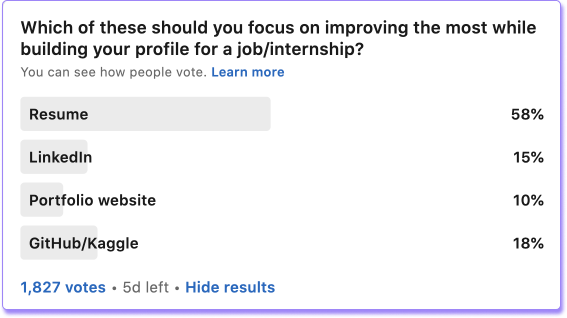
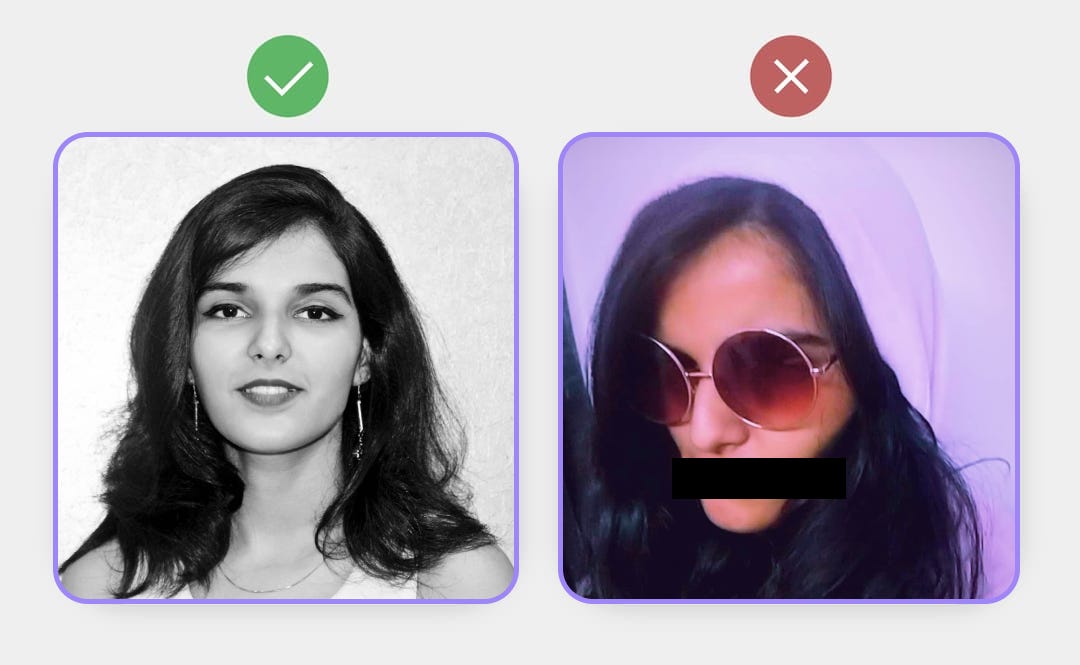
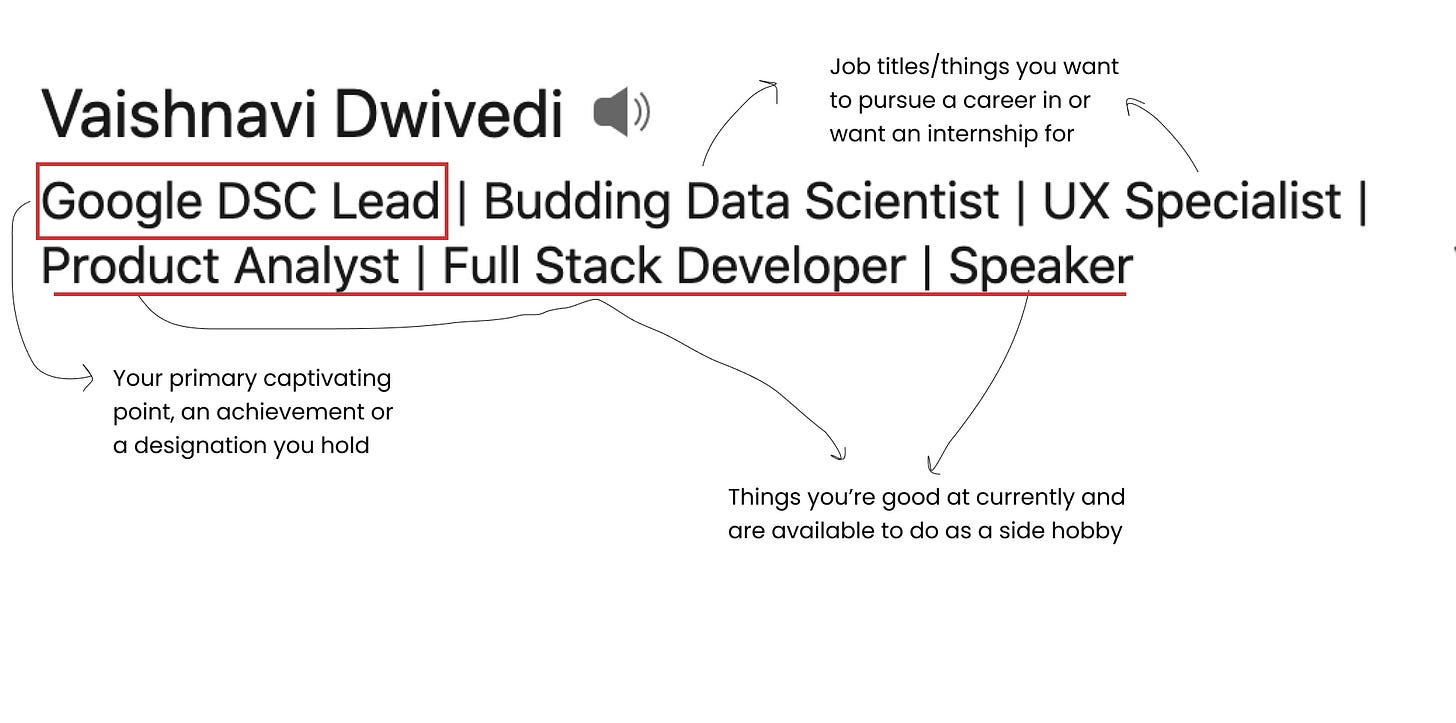
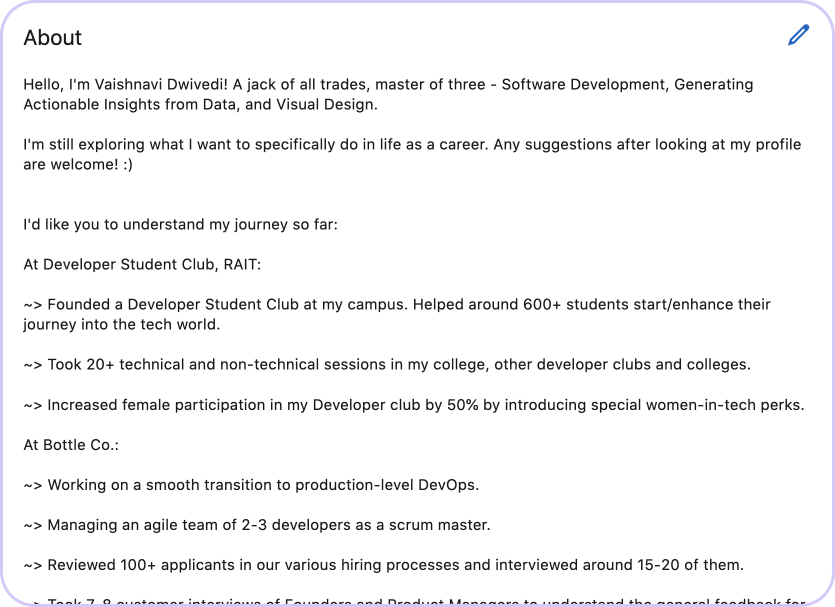

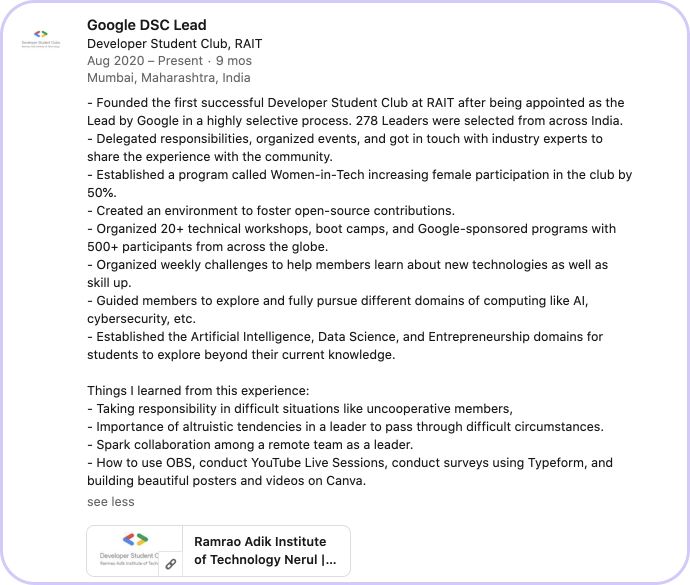
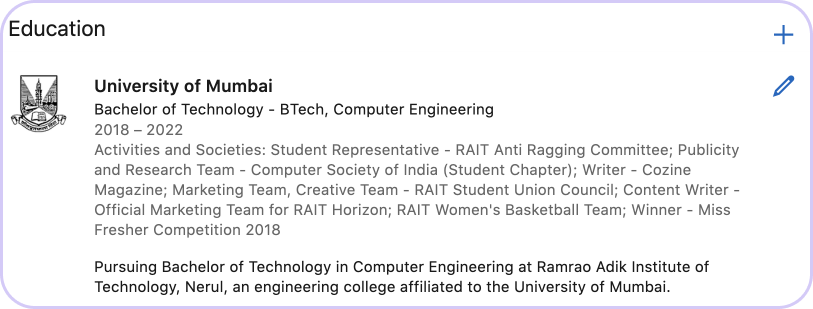
Thanks for the insightful and creative article! If you want to have an attractive and effective linkedin profile, I guess this article will be interesting: https://resumeperk.com/blog/10-top-funny-linkedin-titles!
Good job, Michi!